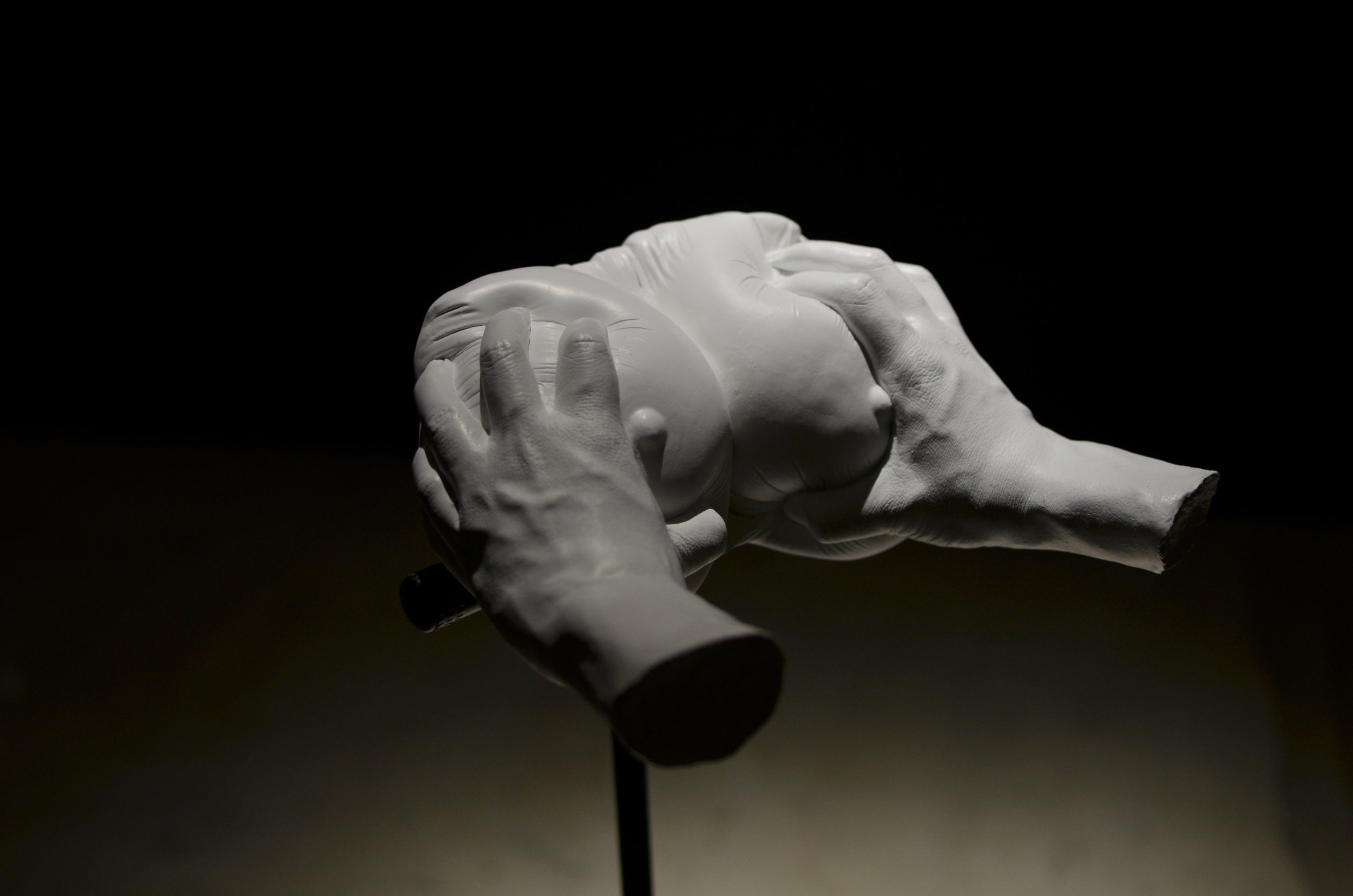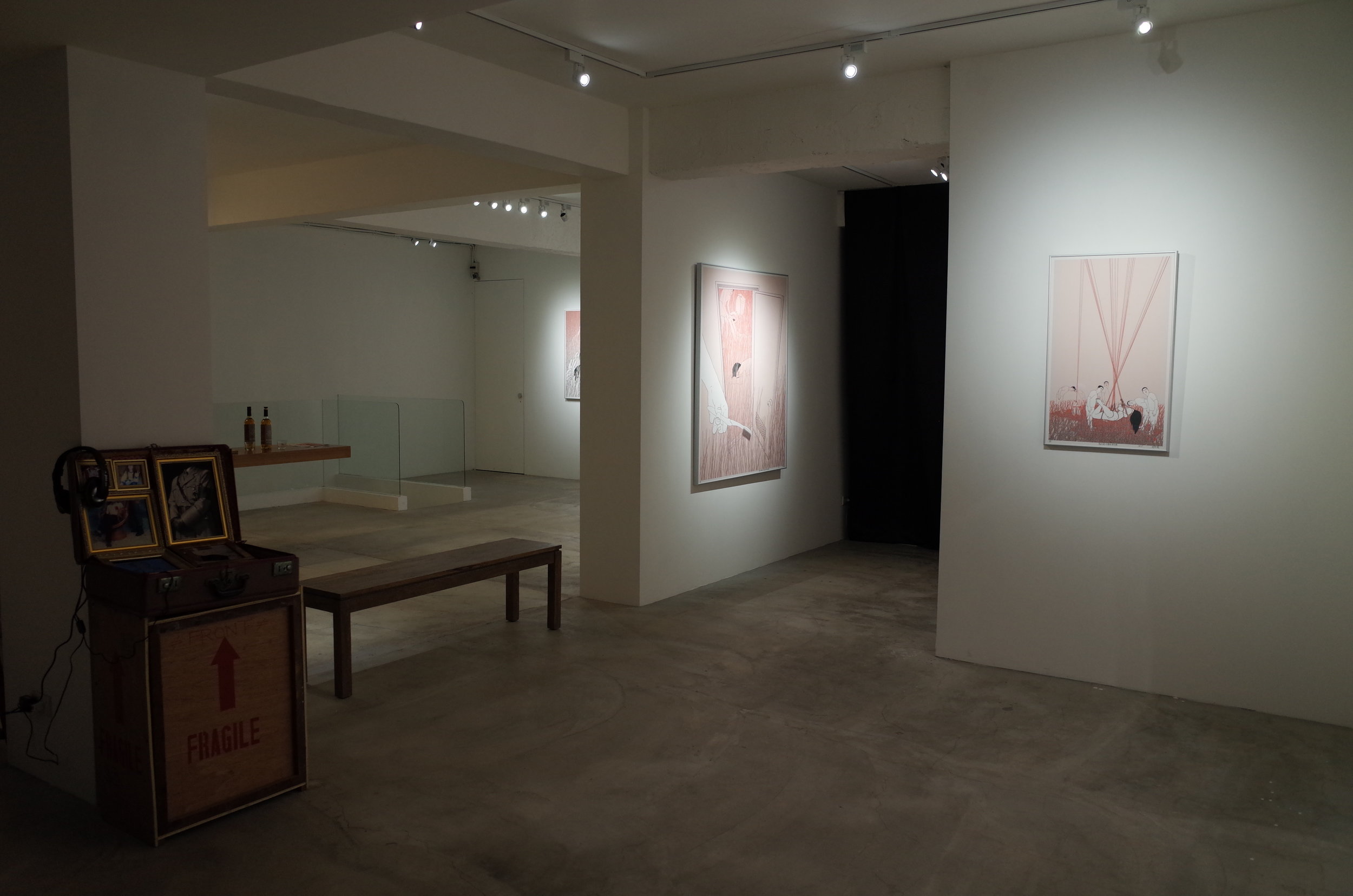Microphone Test II: A Letter From Mother - Che Yu Hsu Solo Exhibition




Over the past few years Hsu Che-Yu’s most impressive and known works were his sequential use of his two friends’ characters in animations to depict social incidents. His work, with unique visual language and rhythm, incisively reflected the twisted structure of modern communication produced by mass media, vehicles of depicting cultural images. Astring of accolades that have come Che-Yu’s way between 2010-2012 include Kaoshiong Award, the Taoyuan Creation Award, and the National Art Exhibition Award. Perhaps it is due to the fact that Hsu Che-Yu has a habit of instilling distances in his work, causing the majority of people to subconsciously analyze the content of his work in a rational manner and to pay excessive attention on Che-Yu’s exploration of weighty issues. However, if one carefully follows the development ofChe-Yu’s past works to the most recent series, there is actually another hidden agenda that Che-Yu has been pondering: that is to use a more personal and perceptual point of view to record one’s gradual transformation from mortal flesh to symbols (how those family and friends became the main character in social incidents), or conversely how to extract the remaining souls and fleshes from symbols ( calling the identity of the deceased from historic materials).
Collective/Personal: The probing helplessness of an individual
Che-Yu has illustrated multiple times the in-your-face feeling of discomfort and awkwardness when one becomes the main character in mass media. In the exhibition “TheNameless Man”, Hsu Che-Yu even revealed the real identity of the two models, and illustrated the stories of their private life. Instead of using a top down approach to dissect structural problems, Che-Yu chooses a bottom up approach to personally probe and fiddle with the audiences’ emotions, to convey the feeling of helplessness and absurdity that an individual may feel under the pressure of a huge external structure.
A Story about Her
Che-Yu’s exhibition at Nunu Fine Art combined four different real life stories that occurred at various point in time: an audio recording of a grandfather’s funeral, an incident of an accidental death, a rape by a fake body casting artist, and a portrait of a deceased in a shrine hall. Each uses different material, such asaudio, sculpture, andpainting, to overwhelmtheaudience’s sensesattheexhibition. The coreconceptsto thesestories revolve around death, memory, ceremony, others , all dreamingly weaving together the life story of a fictitious female character. Theoutlineofthisfemalecharacter actually originates from the writings ofChe-Yu’s female friend, andpartiallycombinedherreal life experiences. The revealing of such intimate stories is essentially to immerse the audiences in a visceral experience, to witness the process of “one becoming a symbol”. In particular, Hsu Che-Yu even seems to place himself into one of the four stories in this exhibition. The story of the rape of a female stranger by a fake artist may serve as a metaphor that Che-Yu himself, as an artist, is in a position of control to consume others, especially those dear and close to him, in his creative world. The opening tea party of the Hsu Che-Yu Exhibition, MicrophoneTest II: Letter from Mother, will be hosted at Nunu Fine Art at 7pm, Saturday, September 26th, 2015. All visitorsarewelcome to attend. At the same time the unveilingof Hsu Che-Yu’s another exhibition“Microphone Test”, based on Huang Guo-Jun’s novel, will occur in Taipei Fine Art Museum.
